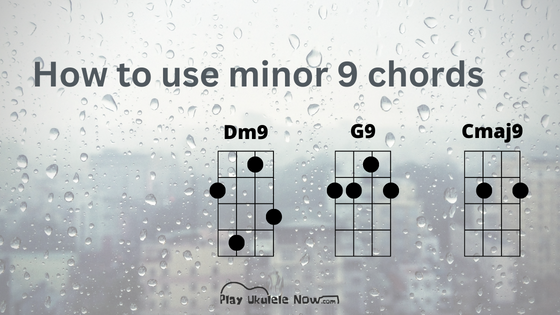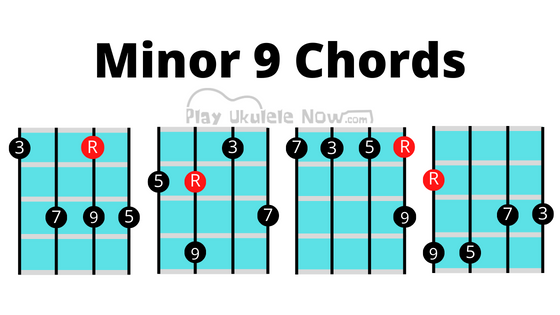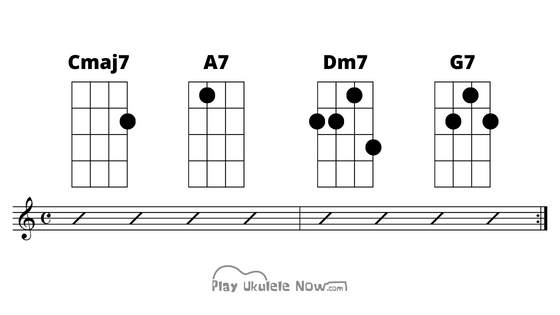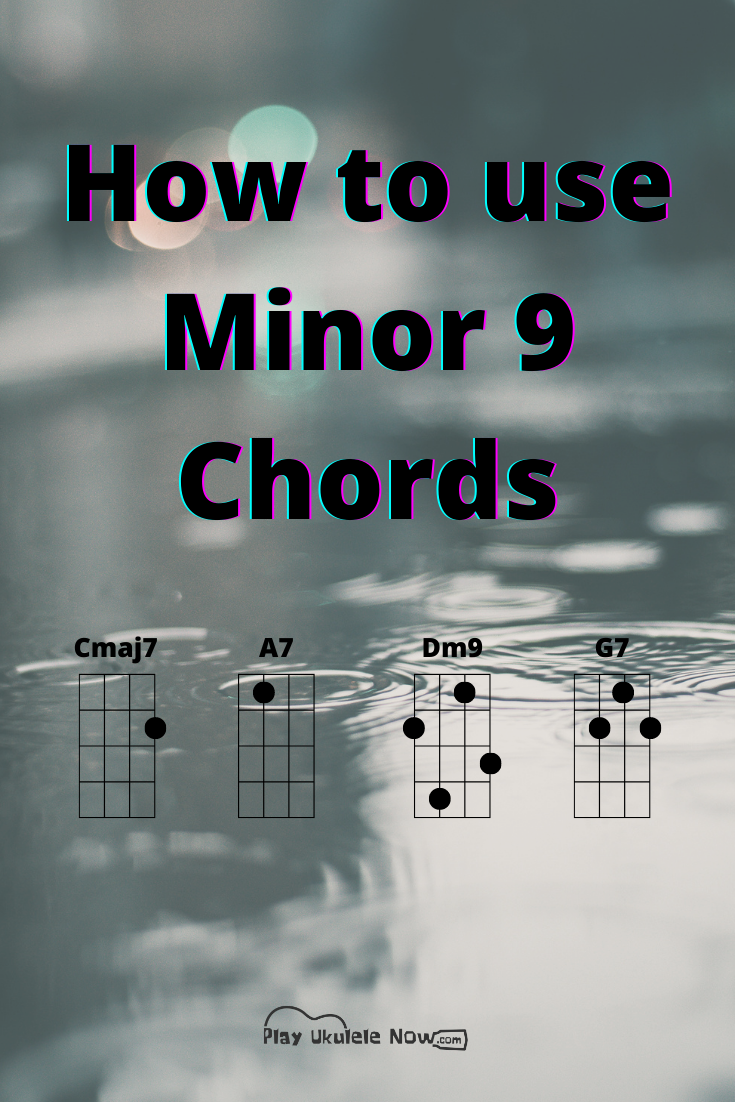Popular substitute for a minor 7 chord.
You will Learn More and Play More with Play Ukulele NOW.
Find out for yourself why teachers and students have depended on Play Ukulele NOW Methods and Songbooks since 2009
Find out for yourself why teachers and students have depended on Play Ukulele NOW Methods and Songbooks since 2009
DISCLOSURE: THIS POST MAY CONTAIN AFFILIATE LINKS, MEANING I GET A COMMISSION IF YOU DECIDE TO MAKE A PURCHASE THROUGH MY LINKS, AT NO COST TO YOU. PLEASE READ MY DISCLOSURE FOR MORE INFO.
Find all my chord related posts here: Chord Tips and Tricks
We talked about substitutes (embellishments - quality changes) for the I chord previously now were covering substitutes for the ii chord (we covered the minor 7b5 here). the chords we talk about here will work as substitutes for any minor chord.
Most popular choices for a ii substitute (embellishment)
Best choices for ii (iii, or vi) substitute (embellishment):
We looked at the the minor 7b5 already; next up is the minor 9.
Check out the minor 9
Play each and listen to the difference...
Try playing just the minor 9 alone, What do you think?
You will notice when it is played in a progression that it takes on a slightly dissonant, but bluesy and sophisticated sound.
If you want something really lovely and bluesy to swap out that minor chord with, this is it.
Easy version
Here's an easier version - It will often be 'out of position' and in some cases it may not sound as good. Of course in some progressions it may sound better...
More on easy chords here (E, Em, D, D7 and B7 are simplified here) and in my my book: Ukulele Chord Tricks - How to Simplify Any Chord
About the minor 9
This is a great substitute (embellishment) for a minor 7 chord. There are easy to make - you take a Minor 7 chord and raise the root note 1 step and it becomes the 9th tone.
These are the easiest forms to use.
Minor 9 chords consist of 5 tones; The root note (1); a minor 3 (b3); a perfect 5th (5); minor 7 (b7) and the 9th tone (9). The forms you will learn here do not have a root note and are based on drop 2 jazz forms (like many of the most effective ukulele chord forms).
The most common ways to make these are without the root note, or without the 5th. These are the most playable forms.
Lets take a look...
You'll notice that these share the same shape as a major 7 chord.
Rules to remember:
- A minor 9 is the same chord (form) as a major 7 a 3rd higher. Ex: D minor 9 is the same chord as an F maj7; count up a 3rd, D, E, F to find it.
Interestingly enough many popular chord books do not have the minor 9 in them! It is one of the top choices for a minor chord substitute so it should be included in all chord books.
GRAB YOUR (PDF) MINOR 9 CHORD CHARTS HERE (Charts show MINOR 9 chords all the way up the neck) and GRAB a FULL COLOR CHEAT SHEET HERE (patreon)
How to use them
Wherever you see a minor 7 in a scale harmonized with 7 chords a minor 9 may be used.
The minor 9 may be substituted for the ii, iii, or vi chord (any minor 7chord).
For the progressions that follow try strumming each chord slowly (1 slow strum for each chord) and then go on to the next chord. Listen to the beauty of each chord - also play the with two strums per chord as indicated, repeat each progression a number of times.
Let's take a look at a ii V I progression...
Let's take a look at a ii V I progression...
PROGRESSION 1 - ii V I harmonized with 7 chords:
In this progression we can substitute the minor 9 for the ii chord (which is D minor 7); take a look:
PROGRESSION 2 - ii V I with the minor 9 for the ii chord:
Play progression 1 a number of times (repeating it etc...)
Then play progression 2 - listen closely to the difference... What do you think?
Now lets take a look at a I VI ii V progression, we changed the quality of the VI like we did in the previous lessons.
PROGRESSION 3 - I VI ii V harmonized with 7 chords:
PROGRESSION 4 - I VI ii V with the minor 9 substituted for the ii chord:
We can use the minor 9 for the vi chord as well... typically the vi chord will be a minor chord (it was before the quality change we've been using).
Lets look at a I vi ii V now (with a major 9 for the I chord and an Am minor for the vi.
PROGRESSION 5 - I vi ii V Harmonized with 7 chords:
PROGRESSION 6 - I vi ii V with a major 9 for the I chord minor 9 for vi & ii, and may as well use a Dominant 9 for the V chord (we'll talk about those in depth later):
Whenever you run across a minor 7 you can slip these in (a minor 9).
One more...
We'll continue the trend (make um' all 9's) with the ii - V - I
PROGRESSION 7 - ii V I with minor 9 for the ii, dominant 9 form the V, and C major 9 for the I:
The I chord could be any of the options we looked here try it with the others, a major 6, 6/9 or major 9 #11 for the I chord...
"Pin me" you 'Ukulele Friends' will want to see this"



.png)

.png)














No comments:
Post a Comment